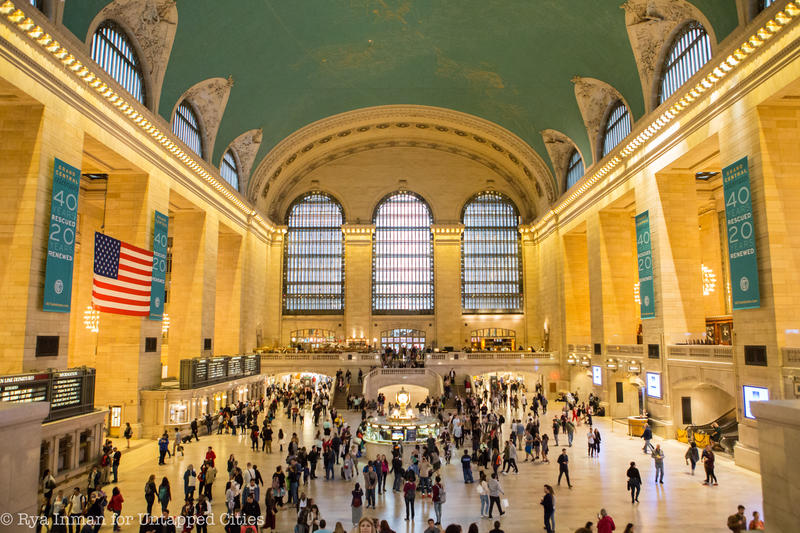2. Grand Central Terminal

Commissioned by Commodore Cornelius Vanderbilt, Grand Central Terminal was constructed just a few years after the original Penn Station. A competition won by Reed and Stem — a firm based in St. Paul, Minnesota that had gained a reputation for designing train stations around the U.S. — awarded them the commission, but William Kissam Vanderbilt (the Commodore’s grandson) brought in Warren and Whetmore to design it jointly. The arrangement was fraught and ended in scandal, but the station turned out to be a masterpiece nonetheless.
The construction of Grand Central took ten years, cost more than $2 billion in today’s dollars, and employed 10,000 workers. It opened in 1913 and to this day remains the largest train station in the world. The main concourse alone measures 275 feet long by 120 feet wide and is the equivalent of 12 stories tall. Its barrel vaulted ceiling is painted turquoise and adorned by a celestial ceiling mural. Parisian artists sculpted decorative elements, including the oak leaves and acorn that the Vanderbilts adopted as their family emblem. But the crowning achievement is the Tiffany clock (the world’s largest) and sculpture of Mercury flanked by Minerva and Hercules on the façade, which measures 48 feet high and weighs 1,500 tons.





